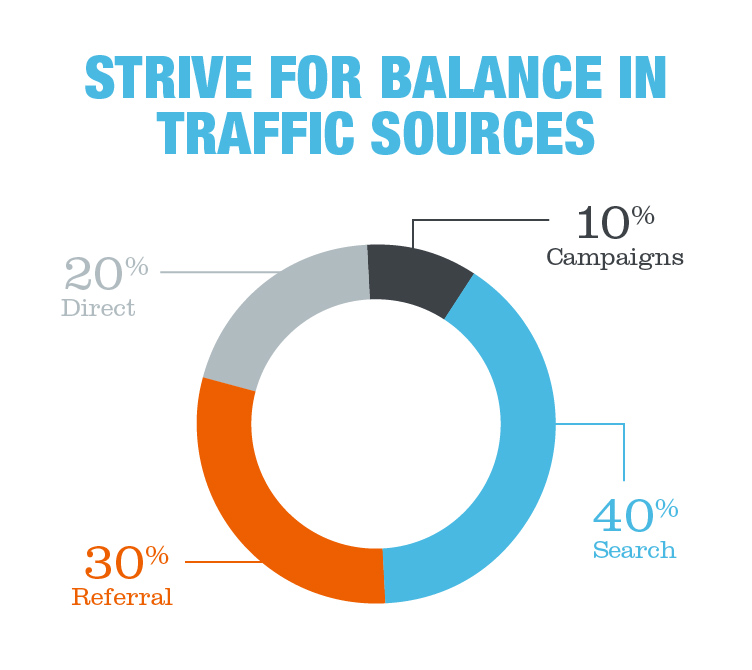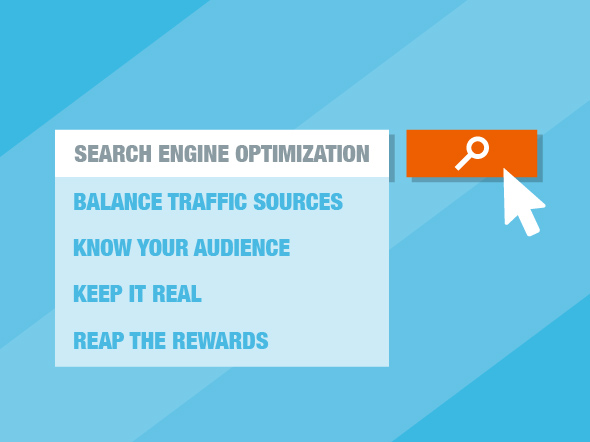A Primer on SEO
06.03.15 · Sonia Greteman
If you’ve ever puzzled over why your VP of marketing gets so wide eyed when talking about your website SEO – or if you’re unsure what the heck SEO even means – this column’s for you. My high-level overview won’t give you the tools to do SEO yourself, but it will shed light on why you ought to share your VP’s enthusiasm about this increasingly critical, website traffic generator.
For starters, search-engine optimization – almost always simply referred to as SEO – helps people who are actively looking for something to find your site. Note that “actively looking” phrase. That’s right. If someone’s not online, not searching, SEO just sits there. Doing you no good at all. SEO doesn’t go out and tap someone on the shoulder and say check this out. It’s a response to an action initiated by the seeker.
Ah, and there is the beauty. Someone needs something. Is seeking information. Wants help. And your SEO is there with the solution, drawing him or her to you. A fairly typical and good balance of traffic to your site would be 40-50 percent via search, 20-30 percent through referral, 20 percent directly keying in your web address or URL, and 10 percent through promotional campaigns (email, advertising, social media).
Strive for Balance in Traffic Sources
Search 40%
Referral 30%
Direct 20%
Campaigns 10%
More Traffic and More Targeted
Unlike interruptive advertising that can aggravate the people being interrupted and even engender bad feelings about your brand, good SEO works to connect you with the right people. It’s not about falsely attracting people to your website just to gain clicks, but about attracting folks genuinely interested in your services or products.
“Optimized” just means your website content has been created to attract both humans and Google search bots. Use words and phrases people actually use when they’re doing a search. Do they search “aircraft” or “jet’? “Fixed-base operator” or “FBO”? Think it doesn’t matter? Think again. A quick look using Google AdWord’s keyword planner tool shows that in one month’s time, there are 480 searches for “fixed-base operator” versus 27,100 for FBO; and 1,000 searches for “aircraft sales” but only 260 for “jet sales.”
Not Rocket Science, But Definitely Science
You don’t need to guess about these terms. Smart tools exist to help you. They include Google AdWords Keyword Planner, Google Analytics, Google Trends and Google Webmaster Tools. (Sensing a trend?) They let you see what terms actual searchers are using and provide additional keyword intelligence. Conducting this analysis takes time and thought. An understanding of your target audiences and markets certainly helps, too. 
Keep It Real
A word of caution. There are all kinds of articles out there with suggestions for ways to generate quick clicks on your site. Don’t be swayed by them. Good SEO practice isn’t about planting click bait just to jack up your numbers. Trying to trick Google into ranking your website higher will oftentimes backfire, as Google will penalize sites when it catches them being sneaky. Plus, if you lure people falsely, they may come to your site, but they’re not going to stick around. And they’re sure not going to request more information, sign up for your enews, contact you directly – or any of the myriad actions you might want from a bonafide visitor.
As CEO, you don’t need to know about meta-keywords (which Google now ignores anyway), H1 headlines or alt tags (which someone else will be writing). Just know that your website is your most important piece of marketing collateral. And it’s worth taking the substantial time to make it more findable. It’s not a once-and-done activity. SEO requires ongoing adjustments and refinement. Partially because search constantly changes. And you have to change with it.
Organic Search Trumps Paid
Paid search serves a purpose if you need results fast – say to generate a bump in sales. But organic search ought to be where you put your greatest effort. It accrues over time and represents up to 75 percent of most search traffic.
Your communications department should ensure the site has good page titles and text throughout the site should be relevant and real – not rendered as graphics, which the search bots cannot read. Your anchor text ought to be relevant to the searcher. Provide things easily and quickly that people are most apt to want. A name. An email address. Deeper information about that new product you just launched.
One of the best ways to improve your findability through search is to keep your content fresh. Blog posts, recent news postings and other frequent updates directly affect how Google indexes your site. Google’s algorithm rewards sites that offer good, timely data.
Support From the Top
Your understanding of the role of SEO – and the importance of aligning it with your corporate goals – will speak volumes to your team. SEO requires collaboration across multiple departments and disciplines – and a clear leader to consistently champion the process. The devil’s in the details of SEO. That’s also where you reap the rewards.
This column ran in the June 4 issue of BlueSky Business Aviation News.
